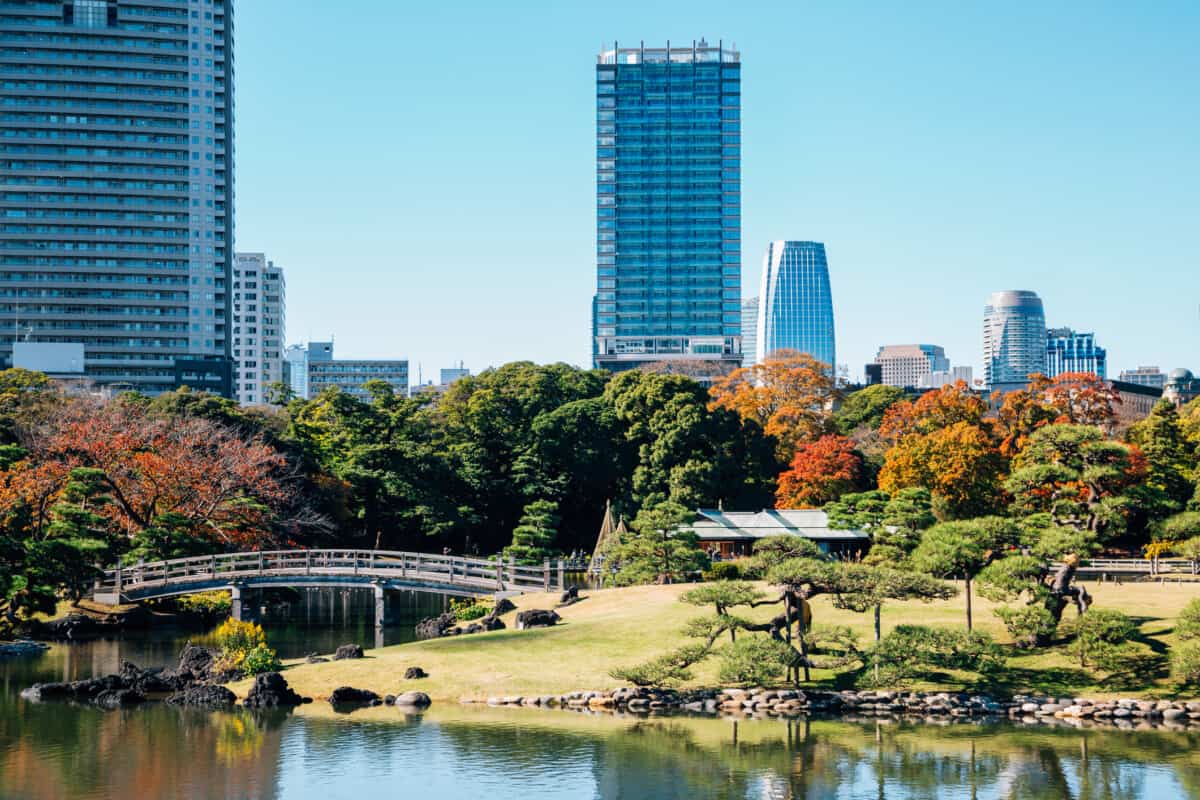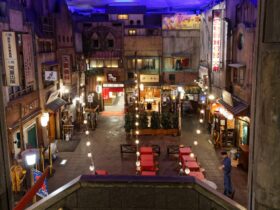Japan’s Hama Rikyu Gardens is an oasis of lush greenery and beautiful waterways on the edge of Tokyo’s Sumida River. Its name translates to “Hama Detached Palace Gardens” which is a nod to its rich history and imperial landscaped gardens.
If you’re visiting Tokyo for the first time or returning to this much-beloved tourist destination, a visit to the spectacular Hama-rikyu Gardens is a must.
With something for everyone, you won’t regret a serene afternoon on one of Tokyo’s best green spaces.
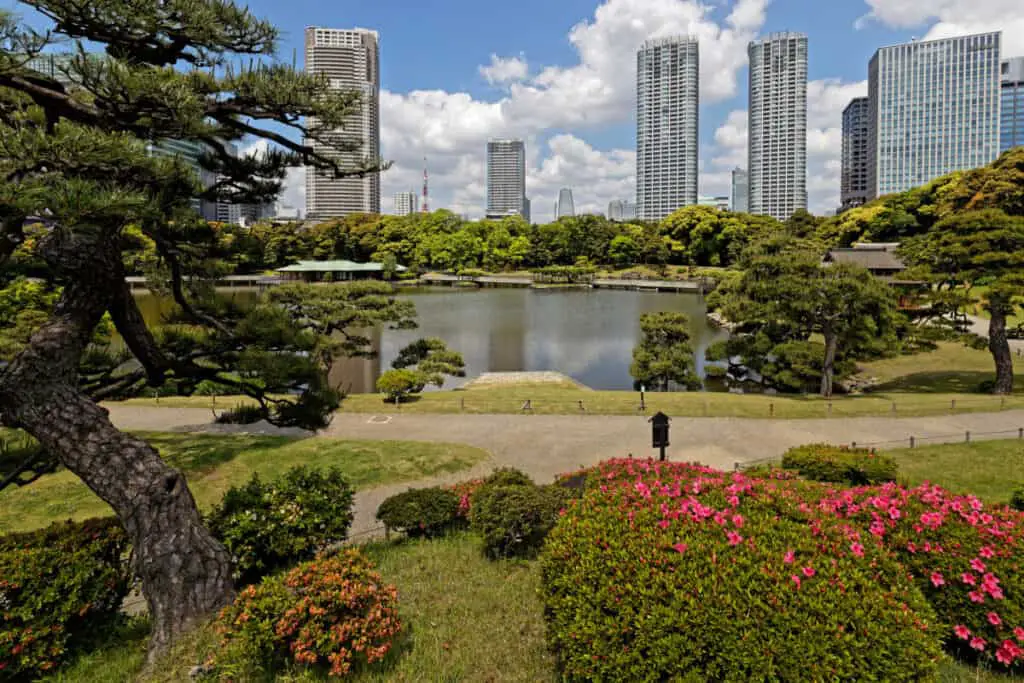
What are the Hama-rikyu Gardens?
The Hama-rikyu Gardens is a large and picturesque landscaped garden 62 acres and a series of ponds in the heart of Tokyo.
With traditionally-styled parks, several tranquil waterways, and beautiful traditional imperial-style buildings, it is an oasis of calm next to the hustle and bustle of nearby Shiodome and its lofty skyscrapers.
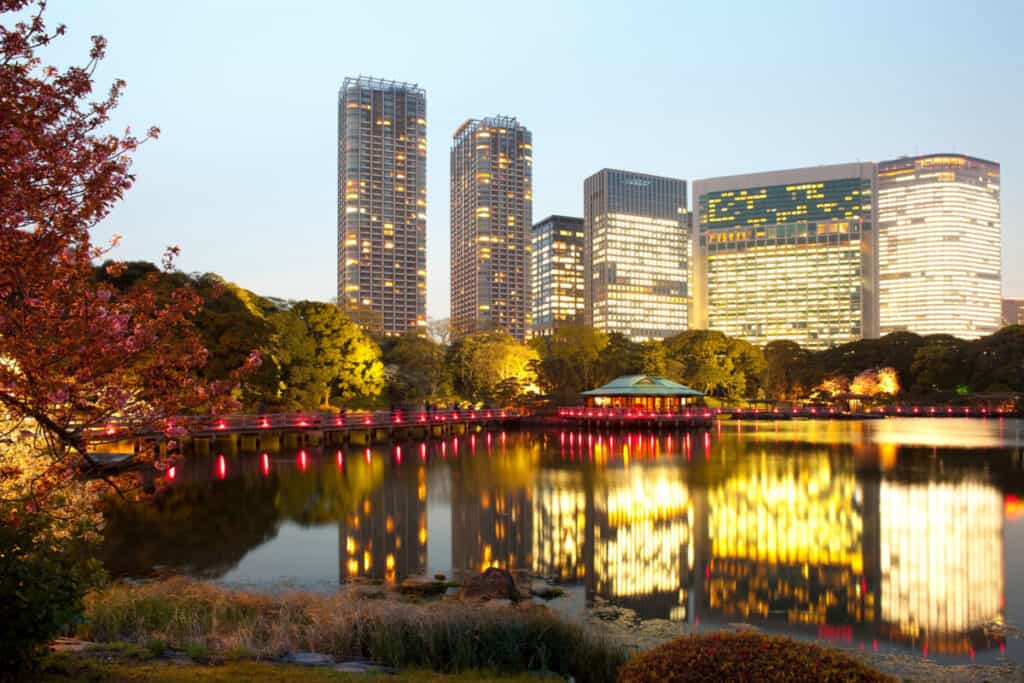
The garden is located alongside Sumida River at the mouth of Tokyo Bay and it is made up of several seawater ponds that were designed to rise and fall with the movement of the tides.
With protected wildlife including native fish and ducks, tranquil gardens, and an island teahouse, there is much for visitors to enjoy. In the past, the ponds were used to corral wild ducks for hunting.
Today, these spectacular birds are protected in this sanctuary.
The History of the Gardens
Today, the gardens are a popular attraction for tourists and locals alike and they have a long and interesting history.
They were originally built during the Edo Period (1603-1867) as a place for Tokyo’s feudal lords to reside, relax, host dignitaries and hunt wildlife.
The gardens originated in 1654, when Tokugawa Tsunashige, the younger brother of Shogun Tokugawa Iemitsu, built a family villa and tended a garden on what was then a stretch of unclaimed land next to the tidal river.
For many generations, shogun and their families used the land for falconry and duck hunting.
The elite classes of the time could reach the gardens by boat, and they landed at a spot to the northeast, very close to where the pier for the water bus is today.
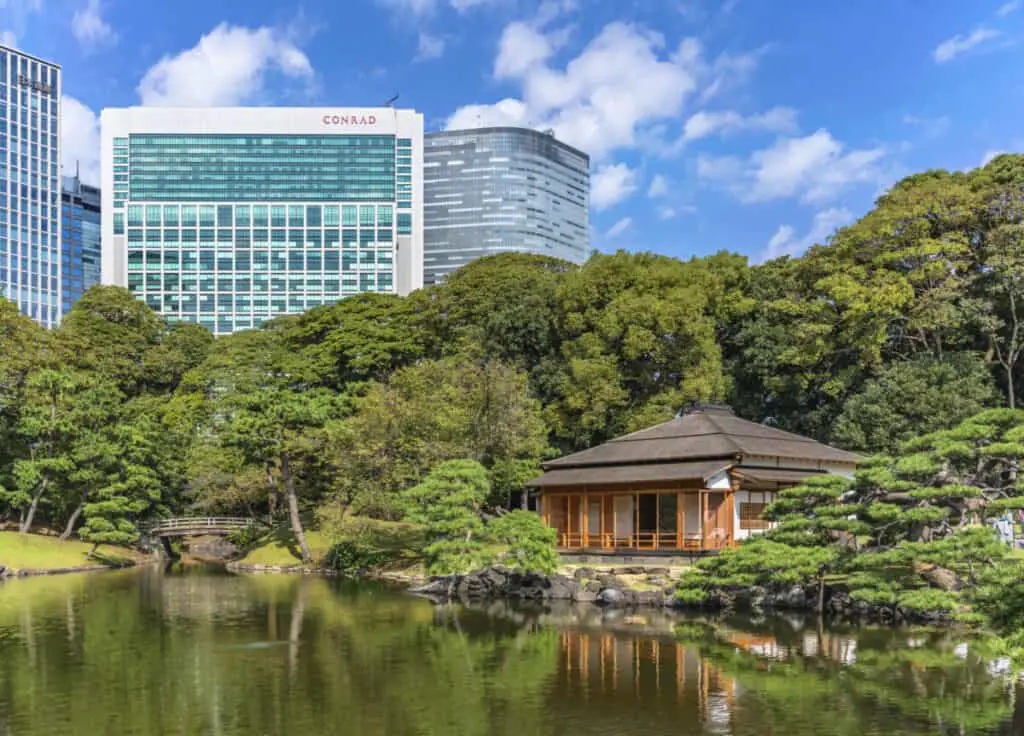
In 1724, the main palace was destroyed by a fierce fire and it was never rebuilt. After the Meiji Restoration, a time when imperial rule returned to Japan in 1868, Emperor Meiji proclaimed the site the “Hama Palace”.
At this time it was used to host visiting dignitaries from outside Tokyo and overseas in a statehouse known as the Enryokan.
In 1879, Emperor Meiji hosted Germany’s Crown Prince Frederick and, later that year, former American president Ulysses Grant. Grant liked the Enryokan so much that he stayed for several months.
The statehouse was demolished in 1889.
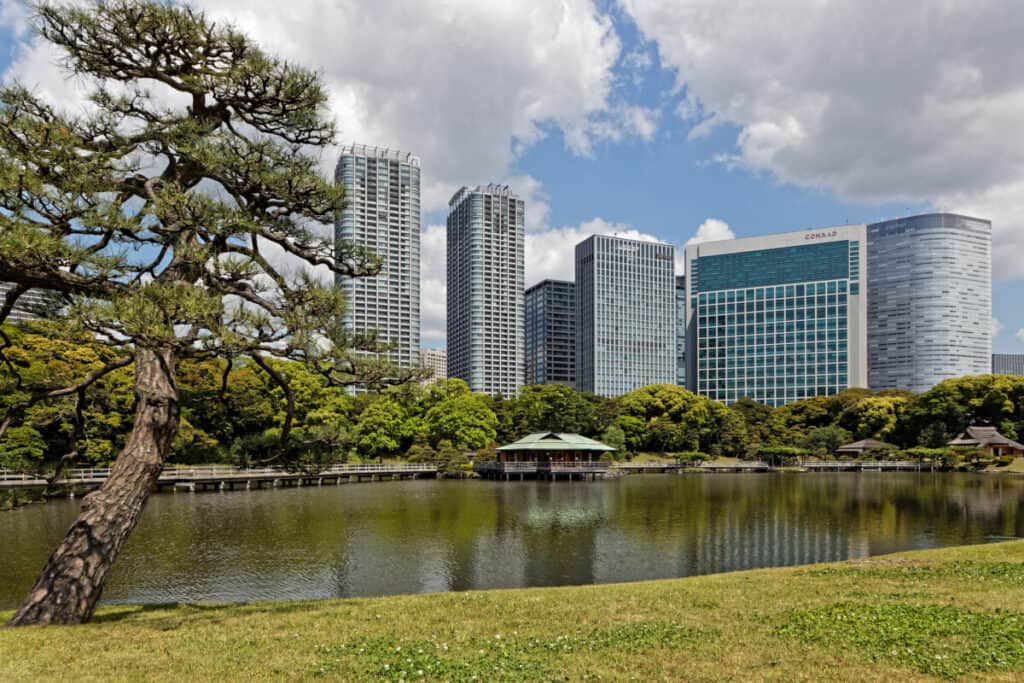
In 1923, Japan suffered through the Great Kanto earthquake. Centered around the Kanto Plain on the main Japanese island of Honshu, the 7.9 magnitude earthquake resulted in the deaths of up to 143,000 people.
The Hama-rikyu Gardens, like much of Tokyo, burned during the fires that were caused by the earthquake.
The Hama-rikyu Gardens burned again, this time in March 1945. It was the latter months of World War II and the United States Army Air Forces firebombed Tokyo from the sky.
In Japan, this devastating event was known as the Great Tokyo Air Raid. It went by the name Operation Meetinghouse in the United States.
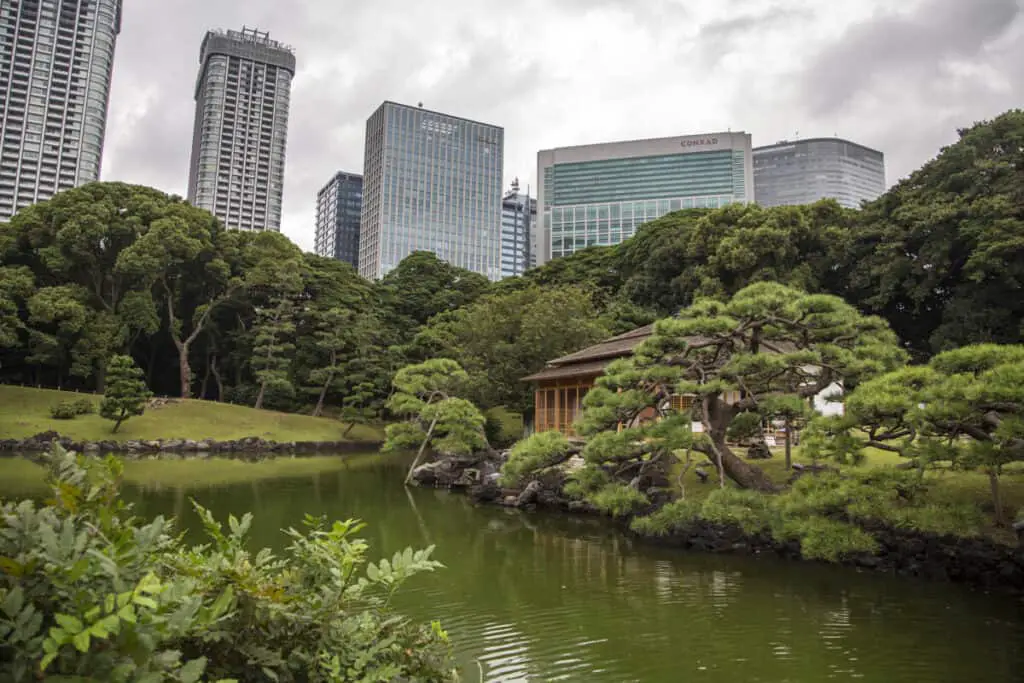
Over 100,000 people were killed in the raids and over one million were left homeless. Like the Hama-rikyu Gardens, much of Tokyo burned.
In November 1945, after the end of the war, the Imperial Household Agency gave the gardens to the city of Tokyo so it could be used as a public garden and it has been used in this way ever since.
As you meander along its paths and marvel at its beauty, you can still see several reconstructed duck blinds, the remains of an old moat, and a reconstructed historical wall.
In the past decade, authorities have also restored and reconstructed the historical tea houses.
The Layout of the Gardens
The 25 hectares of the gardens are made up of large, landscaped fields and several water features including the Shio-iri Pond. The whole precinct is surrounded by a seawater moat that is fed by the tidal waters of Tokyo Bay and Sumida River.
It is roughly square and you can enter via the Nakanogomon (“Inner Gate”) in the northeast or the northern Otemon (“Main Gate”). For both, you have to use a bridge to cross the moat which surrounds the entire garden.
There is a 300-year-old pine tree close to the Otemon gate and legend says that it was planted by Shodun Ienobu.
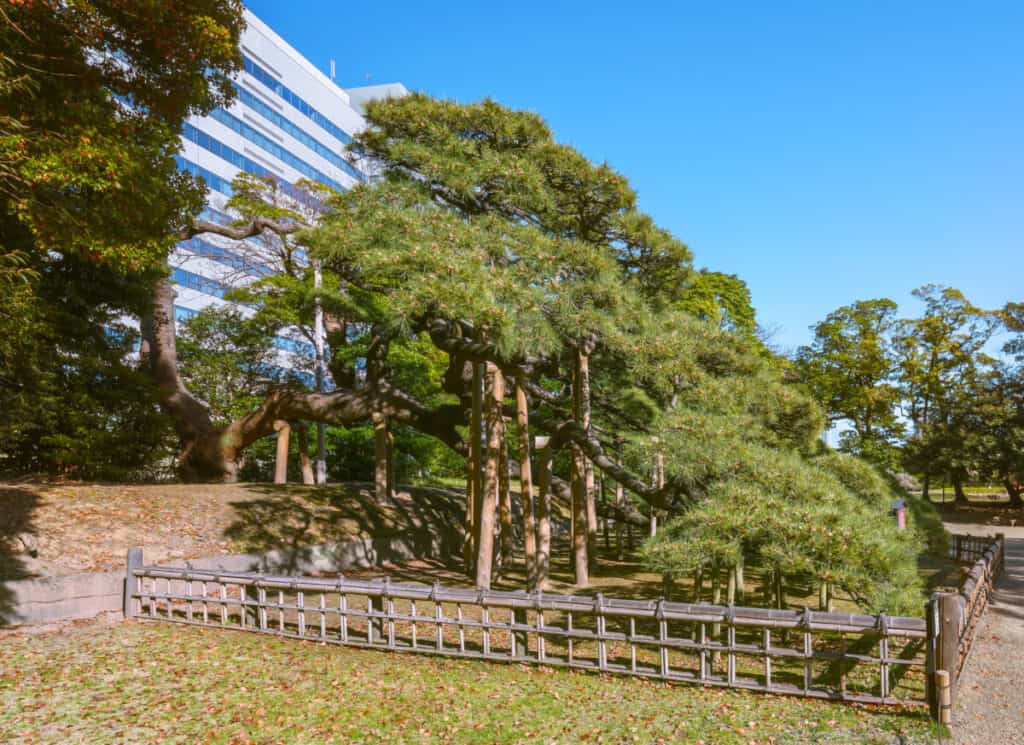
If you continue into the gardens, you will come across the spectacularly colorful Peony Garden and field of wildflowers, which delight with a carpet of red and yellow flowers in summer and spring.
And just a little further, you can see the Plum Grove and Inabu Shrine.
There is a wild grassy field to the south of the Nakanomon entry point and, further south, a duck pond known as Shinsenza kamoba.
Thanks to excellent camouflage, the ducks have no view of the world beyond their pond and they can live as they would in the wild.
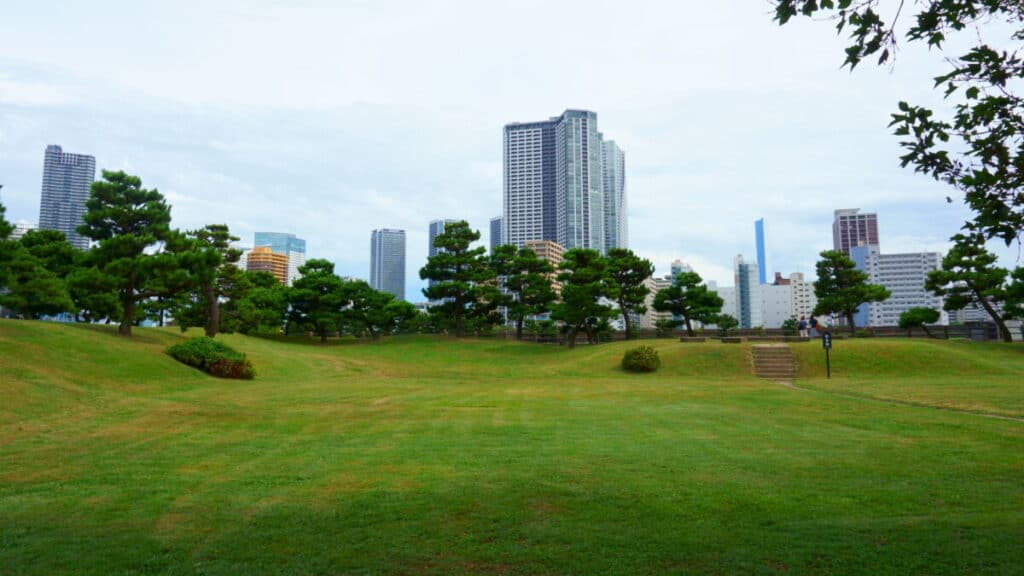
Heading eastwards, you will encounter the Shioirinoike pond. Located so close to Tokyo Bay, it is the city’s only saltwater body of water. The water levels are regulated by a gate to make sure that the gardens never flood.
For those who enjoy traditional Japanese architecture, the Nakajima no Ochaya tea house might be the highlight of your trip to the Hama-rikyu Gardens.
Built on the island of Nakajima in the middle of Shioirinoike, it is a restored version of the tea house that was built in 1707.
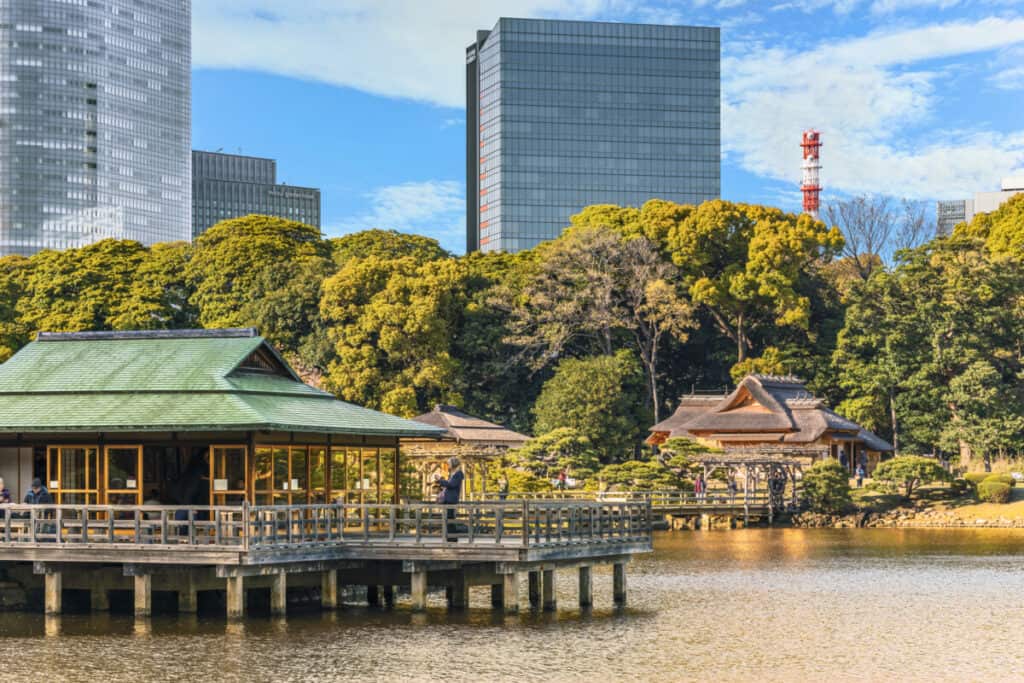
Today, visitors can reach it over several long footbridges. Once there, you can enjoy green tea and traditional Japanese sweets as they take in the beauty before them.
Close by, there are two other duck ponds, the Yokobori and the Koshindo Kamoba. In 1778, it was the garden’s first natural pond.
A Special National Historic Site and Special Place of Scenic Beauty
Thanks to its significant history and undeniable beauty, the Hama-rikyu Gardens is protected from the possibility of damage and destruction.
In 1952, it was designated a Special National Historic Site and a Special Place of Scenic Beauty.
The best time to visit
Each season offers something in the gardens to enjoy. As the weather cools in late October to early December, the maple and Ginko trees provide a spectacular burst of reds, yellows, and browns.
As spring emerges after the cold of winter, so do Japan’s famed cherry blossoms. In late February, you can enjoy plum blossoms and from late March to early April, it is awash with cherry blossoms.
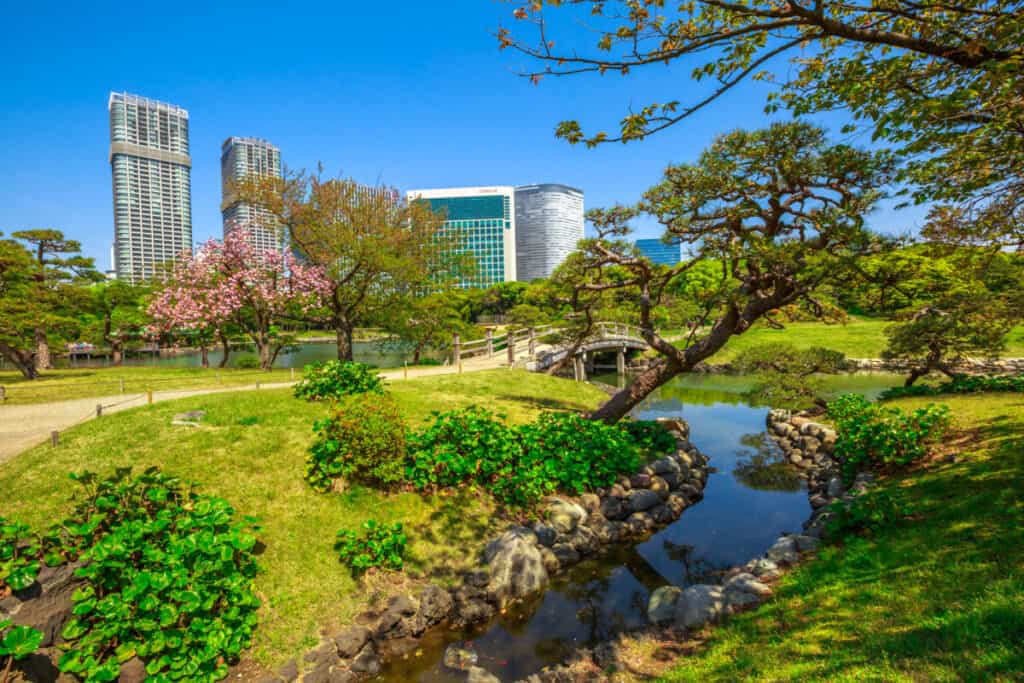
At this time the peony, azalea, and canola flowers keep the grounds awash with color. Flowers are also blooming in the peony and canola gardens, where you can view the colorful azaleas.
If you visit at other times of the year, you can enjoy the irises in the summer and the apricots in the winter.
Garden highlights
If you’re short on time, these are the garden highlights that you simply cannot miss:
- The majestic beauty and tranquillity of the Nakajima no Ochaya teahouse
- The color and splendor of the Peony Garden in spring
- The 300-year-old pine tree
How to get there
Visitors access the park by either of the two northern gates or the Tokyo Cruise Ship water bus.
Hama-rikyu Gardens are located at 1-1 Hamarikyu-teien in Chuo City, Tokyo. Like most places in Tokyo, it is very easy to get to on foot or using mass transit.
You can reach the entrance at Nakanogomon Bridge in about five minutes when you walk from Shiodome Subway Station. You can get there along both the Toei Oedo subway line and the Yurijamome line.
Hama-Rikyu Location Via Google Maps
You can reach the entrance at Otemon Gate in about eight minutes from Shiodome Station. You can also get there using the A2 exit of Tsukijishijo Station. Both stations are part of the Toei Oedo subway line.
The gardens are also a 12-minute walk when you arrive at Shimbashi Station, which can be reached on the Yamanote, Ginza, and Asakusa lines.
Hama-Rikyu Gardens Official Website
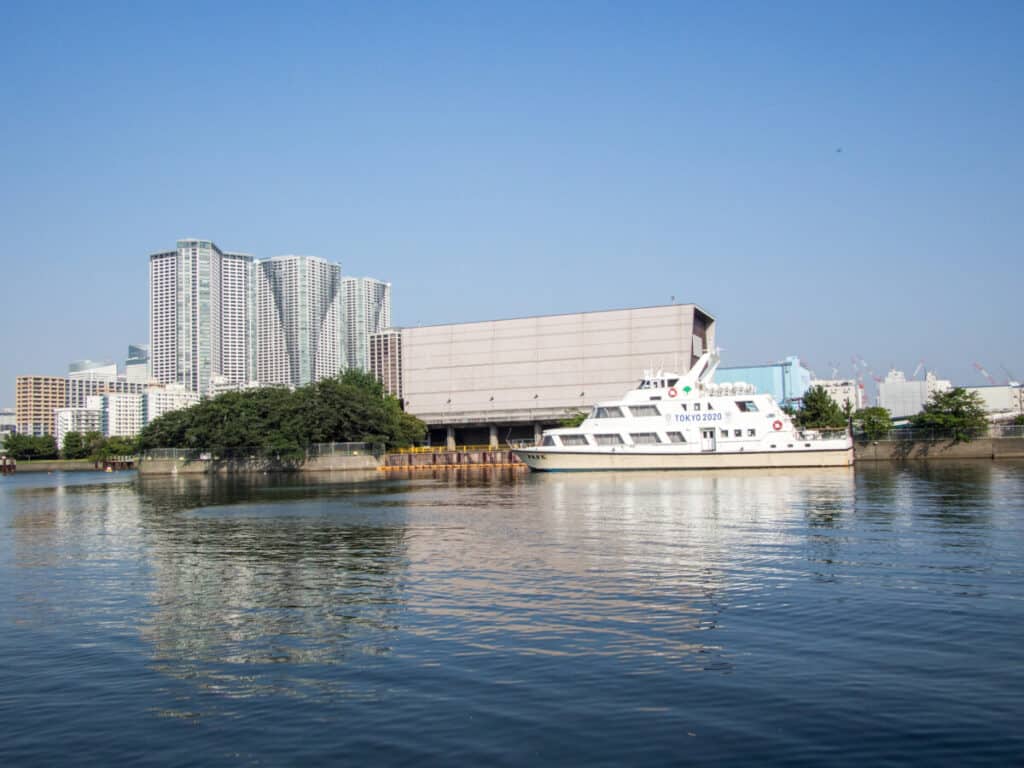
For those who prefer a nautical option, there is also a ferry or water bus (suijo) pier at the gardens themselves. It will take you 35 minutes on the water when coming from Asakusa, and just five from Hindoe Pier.
For those at the fish Market at Tsukiji, it’s just a five-minute walk.

